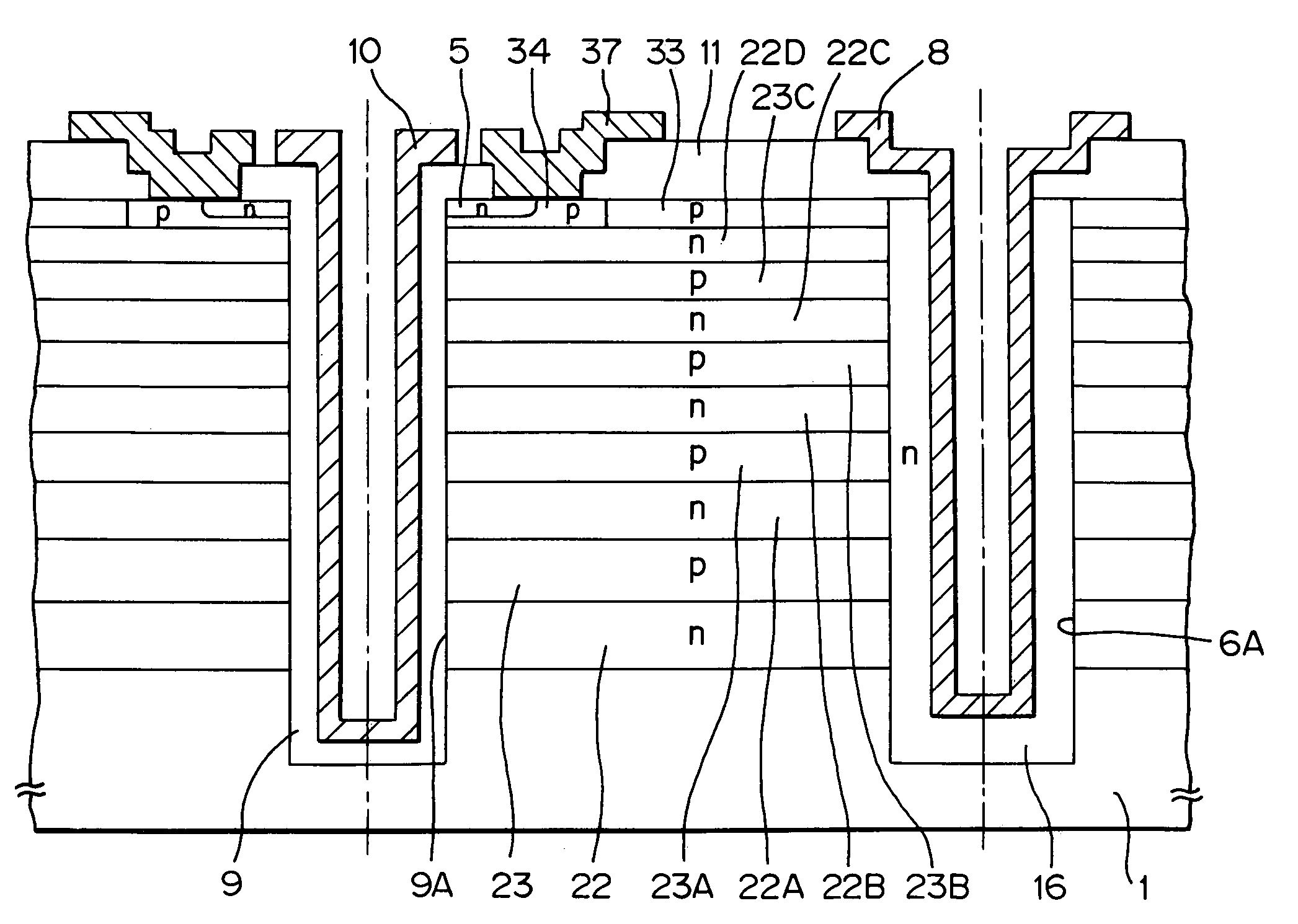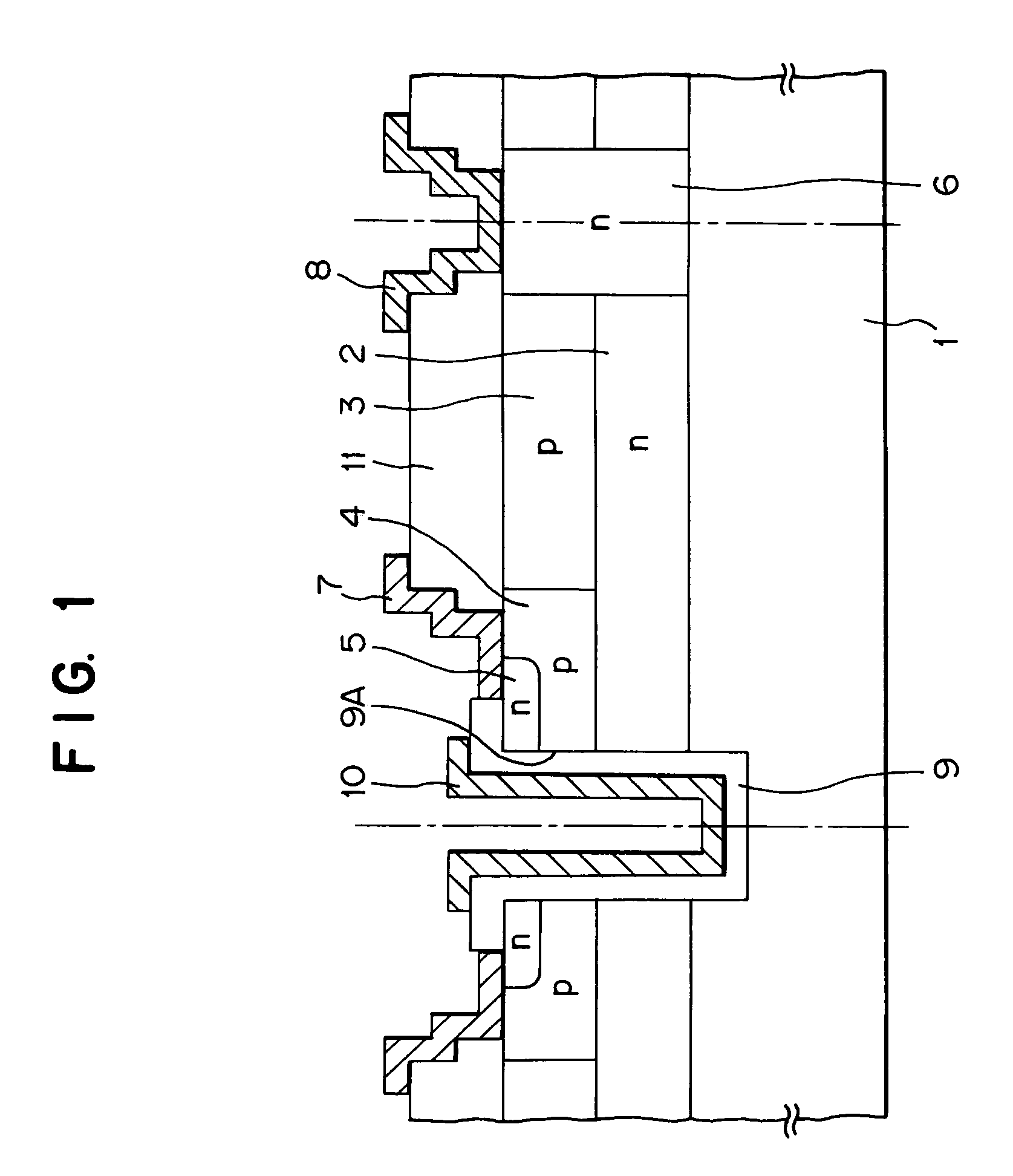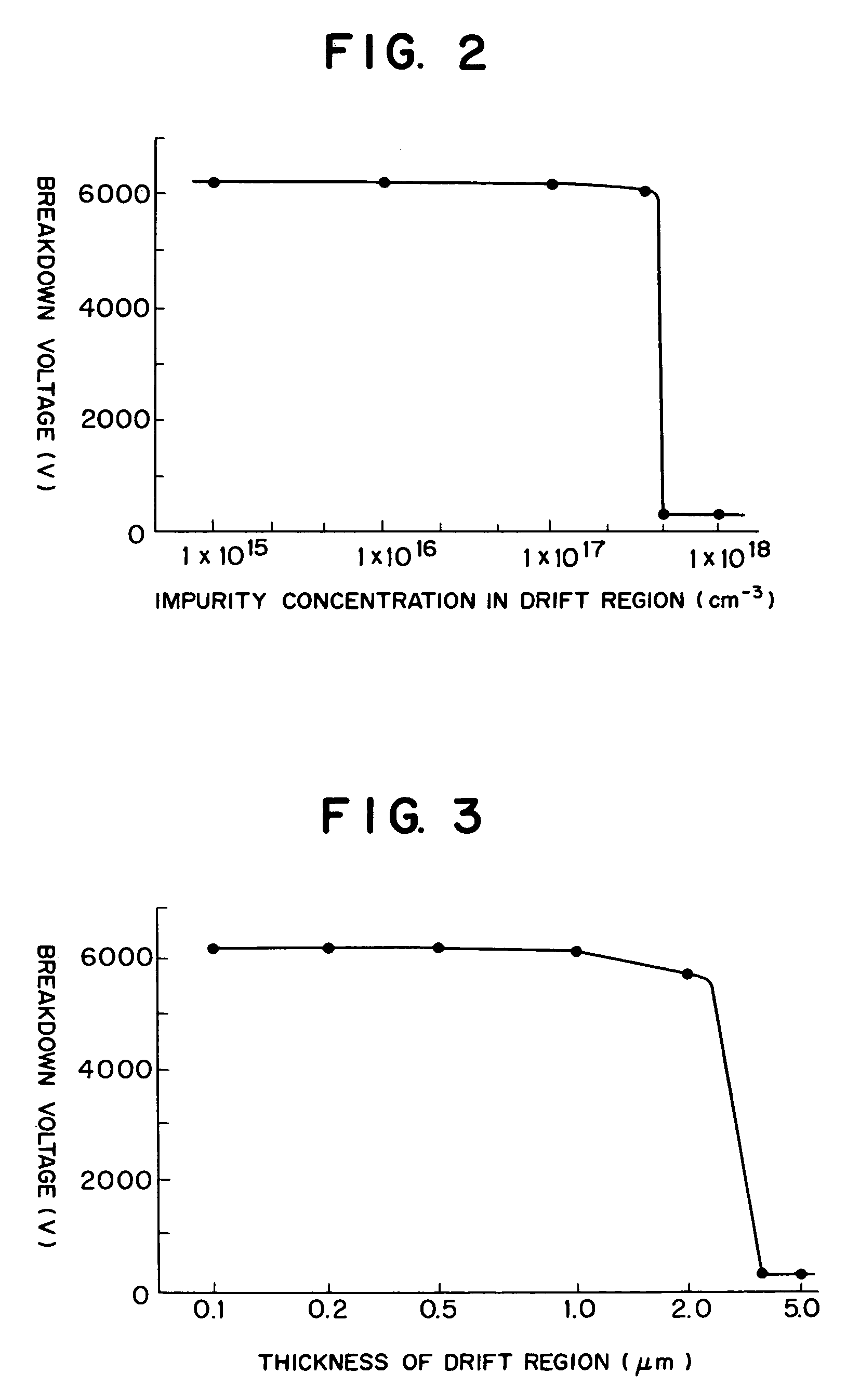High-voltage power semiconductor device with body regions of alternating conductivity and decreasing thickness
a technology of alternating conductivity and semiconductor devices, which is applied in the direction of semiconductor devices, transistors, electrical devices, etc., can solve the problems of difficult to increase the withstand voltage, reduce the resistance in the drift region, and reduce the loss, so as to reduce the electric field, reduce the resistance, and the effect of high withstand voltag
- Summary
- Abstract
- Description
- Claims
- Application Information
AI Technical Summary
Benefits of technology
Problems solved by technology
Method used
Image
Examples
first embodiment
[0058]FIG. 1 is a section view of a semiconductor device of a first embodiment of the present invention. The first embodiment is a wide gap semiconductor device, and is a SiC field effect transistor with a withstand voltage of 6100 V. FIG. 1 shows a sectional structure of segments. A dielectric substrate 1 in the drawing is an extremely high resistance wide gap SiC (silicone carbide) substrate including impurities forming a deep energy level such as vanadium, the resistance ratio is 109 Ωcm or more, and the thickness (a vertical dimension in the drawing) is about 350 μm. A semiconductor device using a SiC substrate is generally referred to a wide gap semiconductor. A first conductive type n-type drift region 2, and a second conductive type p-type drift region 3 formed thereon have approximately the same thickness (virtually the similar thickness), and the same impurity concentration, the thickness is about 0.8 μm and the impurity concentration is about 8×1016 atm / cm3. With the const...
second embodiment
[0065]FIG. 4 is a section view for showing segments of a SiC field effect transistor of a second embodiment of the present invention. The second embodiment is the same as the first embodiment except for the following three points.
[0066](1) A p-type drift region 12 thinner than the drift region 3 is provided between the drift region 2 and the dielectric substrate 1.
[0067](2) The n-type drain region 6 is formed along the inner wall of a trench 6A reaching to the dielectric substrate 1, the drain region 6 connects with the drift regions 2, 3, and 12, and the drain electrode 8 is provided on the surface of the drain region 6.
[0068](3) The trench 9A is formed so deep as to reach the drift region 12 for the gate electrode 10, and the oxide film 9 and the gate electrode 10 are formed along the inner wall of this trench.
[0069]The thickness of the n-type drift region 2 is 1.3 μm, the thickness of the p-type drift regions 3 and 12 is 0.8 μm, and individual impurity concentrations are about 7×...
third embodiment
[0073]FIG. 5 is a segment section view of a SiC field effect transistor of a third embodiment of the present invention. Five pairs of an n-type drift region and a p-type drift region are sequentially laminated such that p-type drift regions 23, 23A, 23B, and 23C are respectively laminated between n-type drift regions 22, 22A, 22B, and 22C on the SiC dielectric substrate 1 with the thickness of 320 μm. The trenches 6A and 9A are provided so as to reach the dielectric substrate 1 on both ends of the laminated individual drift regions 22 and 23. The trench 9A is for a gate part, and the gate electrode 10 is provided through the gate oxide film 9. The trench 6A is for a drain part, and a drain region 16 and the drain electrode 8 are provided on the inner wall. A p-type body region 34, the n-type source region 5, and a source electrode 37 connected with these regions are provided on the gate part side of the upper most layer of a p-type drift region 33. The surface protection film 11 suc...
PUM
 Login to View More
Login to View More Abstract
Description
Claims
Application Information
 Login to View More
Login to View More - R&D
- Intellectual Property
- Life Sciences
- Materials
- Tech Scout
- Unparalleled Data Quality
- Higher Quality Content
- 60% Fewer Hallucinations
Browse by: Latest US Patents, China's latest patents, Technical Efficacy Thesaurus, Application Domain, Technology Topic, Popular Technical Reports.
© 2025 PatSnap. All rights reserved.Legal|Privacy policy|Modern Slavery Act Transparency Statement|Sitemap|About US| Contact US: help@patsnap.com



